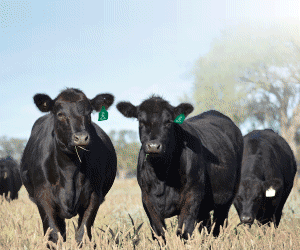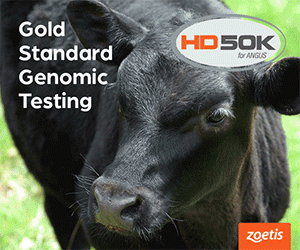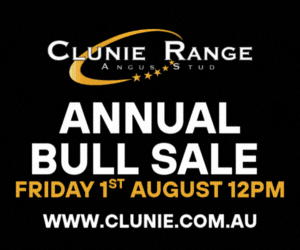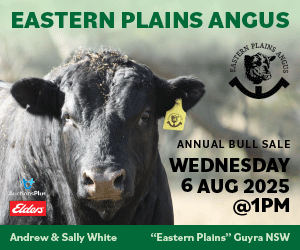Collecting Live Animal Ultrasound Scanning Information
Live animal ultrasound scanning measurements, in association with abattoir carcase data, are used to calculate Carcase EBVs within the TransTasman Angus Cattle Evaluation (TACE).
What is live animal ultrasound scanning?
Live animal ultrasound scanning is a non-invasive technology that allows the seedstock or commercial beef producer to assess the carcase merit of an individual animal whilst still alive as opposed to the collection of carcase data in the chiller.
The carcase attributes most commonly measured by ultrasound scanning include:
Rump Fat Depth Rump
Fat Depth is measured at the P8 rump site. The P8 rump site is located at the intersection of the line from the high bone (third sacral vertebrae) with a line from the inside of the pin bone. Rump Fat Depth will be reported to the nearest mm (e.g. 10 mm).
Rib Fat Depth
Rib Fat Depth is measured at the 12/13th rib site. The 12/13th rib site is located on the longissimus dorsi muscle (eye muscle) between the 12th & 13th rib. Rib Fat Depth will be reported to the nearest mm (e.g. 7 mm).
Eye Muscle Area
Eye Muscle Area is measured as the cross sectional area of the longissimus dorsi muscle between the 12th & 13th rib. EMA is reported to the nearest cm2 (e.g.110 cm2 ). Eye Muscle Area is also referred to as Rib Eye Area.
Intramuscular Fat (IMF)
The carcase benchmark for intra-muscular fat is the chemical extraction of all fat from a meat sample taken as a slice off the longissimus dorsi between the 12th & 13th ribs. Ultrasound scanning for IMF uses a longitudinal image of the longissimus dorsi muscle between the 12th & 13th ribs. IMF is reported as a percentage (eg 3.5%)
Use of accredited scanning technicians
TACE can only accept live animal ultrasound scanning measurements that have been collected by an accredited technician. A list of accredited technicians can be accessed from the TACE area of the Angus Australia website, or by contacting staff at Angus Australia.

Which animals should be scanned?
While bulls are most commonly scanned, it is recommended that both bulls and heifers are scanned. Heifers provide valuable data for IMF as they mature earlier and better express genetic differences than males. While often cost prohibitive, scanning steers will also provide useful information for their sires and dams.
TACE can analyse live animal ultrasound scanning measurements from animals that are between 300 – 800 days of age at scanning. It is important to scan animals when they are within this age range, with the majority of animals being scanned as either yearlings or rising 2 year olds (i.e. around 600 days of age).
It is critical that animals are in appropriate condition when live animal ultrasound scanning measurements are collected and consequently, condition of stock should be the most important consideration when making a decision about when to scan animals.
Scanning animals when they are in appropriate condition ensures that there will be sufficient variation between animals to allow genetic differences to show up. If all animals are in very poor condition it would be expected that they would all have very similar rib & rump fat depths (i.e. 1-2 mm) and negligible marbling. In this scenario, scanning would be of little benefit as a means of identifying animals that are genetically different for fat depth and genetically superior for IMF. Effective results may still be achieved for EMA as sufficient variation is likely
to exist between animals irrespective of condition.
As a rough guide, animals require a minimum average rump fat depth of 4–5 mm (or a minimum average rib fat measurement of 3 mm) to facilitate the collection of useful scanning measurements. Results for IMF will be further optimised if the majority of animals have between approximately 2 – 8% IMF when scanned. The effectiveness of the current scanning machines decreases when measuring IMF levels outside this range.
If animals have been in poor condition and have put on the required 4 – 5 mm of fat in a relatively short period, then there may still not be sufficient variation between animals to allow genetic differences to show up, particularly for IMF. Members who are in any doubt regarding when to scan their animals, should discuss their situation with an accredited scanner or contact staff at Angus Australia.
The availability of accredited technicians will also influence the time of scanning, but should not be a major determinant.
- While more than one set of live animal ultrasound scanning measurements can be collected for an individual animal, TACE is only analysing the first EMA, rib fat, rump fat and IMF measurement for each animal at this stage. Consequently, it is only necessary to collect one set of ultrasound scanning measurements on each animal for TACE. While all traits are typically measured on the same day, it is possible to submit EMA, rib fat, rump fat and IMF measurements where the individual traits have been measured on different days.
- It is important to try and scan as many animals within each management group as possible. Submission of live animal ultrasound scanning measurements for only a selection of calves (e.g. only submitting the scanning performance of sale bulls rather than the entire bull drop) may result in data biases and the subsequent calculation of carcass EBVs that do not reflect the true genetic merit of animals.
- Live animal ultrasound scanning measurements should be recorded for all animals in a contemporary group on the same day. TACE will not directly compare scanning measurements collected on different days.
Click here to print
Click here for a list of Accredited Scanners
Angus Australia acknowledges the funds provided by the Australian Government through the Meat & Livestock Australia Donor Company (MDC).
This resource was created as a result of a collaboration between Angus Australia and Meat & Livestock Australia Donor Company (MDC) (Project P.PSH.1063).






